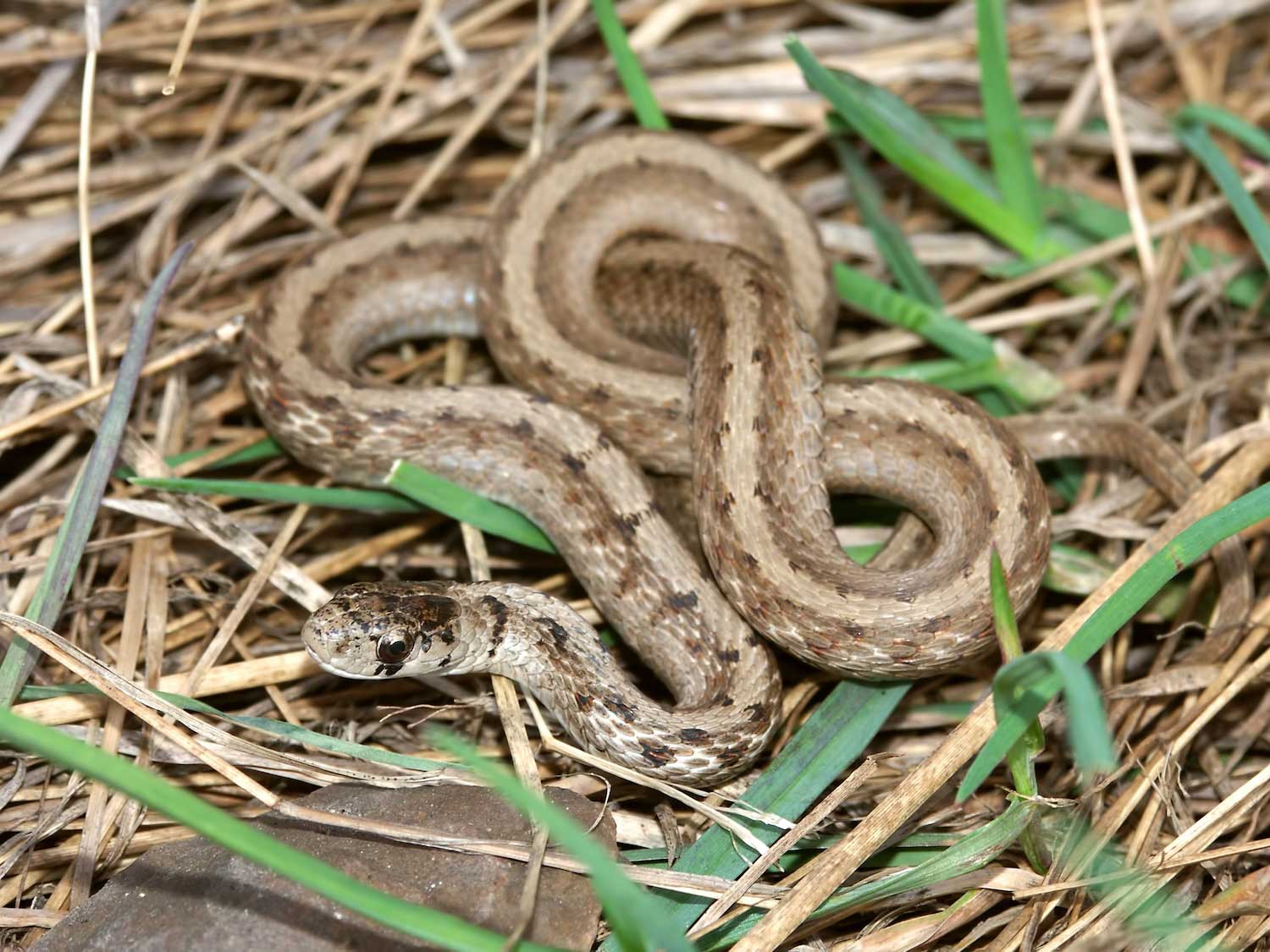Nature curiosity: How do snakes slither?

Most land-based animals rely on their legs or wings to get around, and even winged creatures like birds and insects have legs that help them ambulate. But that's not so with snakes, which have no legs or wings to help them get from place to place.
You probably know snakes slither, but do you know how they slither? It turns out it depends on the snake, the habitat they are in and what is happening around them. Snakes can move in one of four ways: serpentine movement, sidewinding locomotion, rectilinear progression or concertina movement. Most snakes are capable of more than one kind of movement, according to the BBC's Discover Wildlife.
All the different kinds of movement are possible because of their strong muscles, long and flexible spines and extensive rib cages with many individual rib bones, Discover Wildlife reports. Some snake species have as many as 400 ribs! Compare that to humans. We have 24 ribs, 12 on each side of our rib cage. Muscles are attached to their many rib bones, and as they contract, it allows the snake to move. These contractions help snakes slither but also swim, climb and fling themselves into the air.
The most common form of snake movement is serpentine locomotion. This is what we generally consider to be slithering. This kind of movement, also called lateral undulation, is a side to side movement created when the snake's body forms S-shaped loops. These loops make contact with irregularities in the ground's surface, like bumps, sticks or rocks, allowing the snake to propel itself forward. With serpentine movement, the more flat the ground is, the more energy the snake must use to move itself. All those bumps, sticks and rocks are actually helping the snake move more easily.
Sidewinding is a type of locomotion that allows snakes to move sideways across smooth surfaces. It does not rely on friction as much as other types of movement. With this movement, the snakes have very little contact with the surface over which they are moving, with just two points of contact at any given time. Sidewinding allows snakes to move quickly, but only over surfaces without a lot of friction, according to Haverford University's Jolt magazine. Because of this, it is mostly used by snakes in desert or sandy habitats.
Rectilinear locomotion is commonly used by large snakes like boa constrictors and tunneling snakes. It, too, involves muscle contractions to create movement, but these muscle contractions are more like scooting forward in a straight line little by little than slithering, Jolt reports.
Concertina movement is similar to rectilinear location, but the S shape is still part of the movement pattern, so the snake doesn't move in a straight line. With this type of movement, a snake will stretch out the front of its body. Then, to move up the rear section, it will bunch its body into an S shape. It continues this pattern to create movement, according to Discover Wildlife.
Snakes aren't the only legless terrestrial animals. There are also legless lizards, including one right here in Will County. The slender glass lizard looks much like a snake, but it is classified as a lizard and not a snake because it has movable eyelids and external ear openings, two things snakes lack, the Illinois Natural History Survey reports. Legless lizards move like serpentine snakes, slithering using an S-shaped movement.
One more legless creature that might come to mind is the earthworm. They don't slither like snakes, but their movement is somewhat similar to rectilinear locomotion. They extend the front of their body forward then contract to pull their rear part forward, the Missouri Department of Conservation reports. They have short, bristly hair called setae on their bodies that point toward their rear, and these hairs help them grip the earth as they move forward. This gripping movement helps prevent them from slipping backward as their rear is pulled forward.
